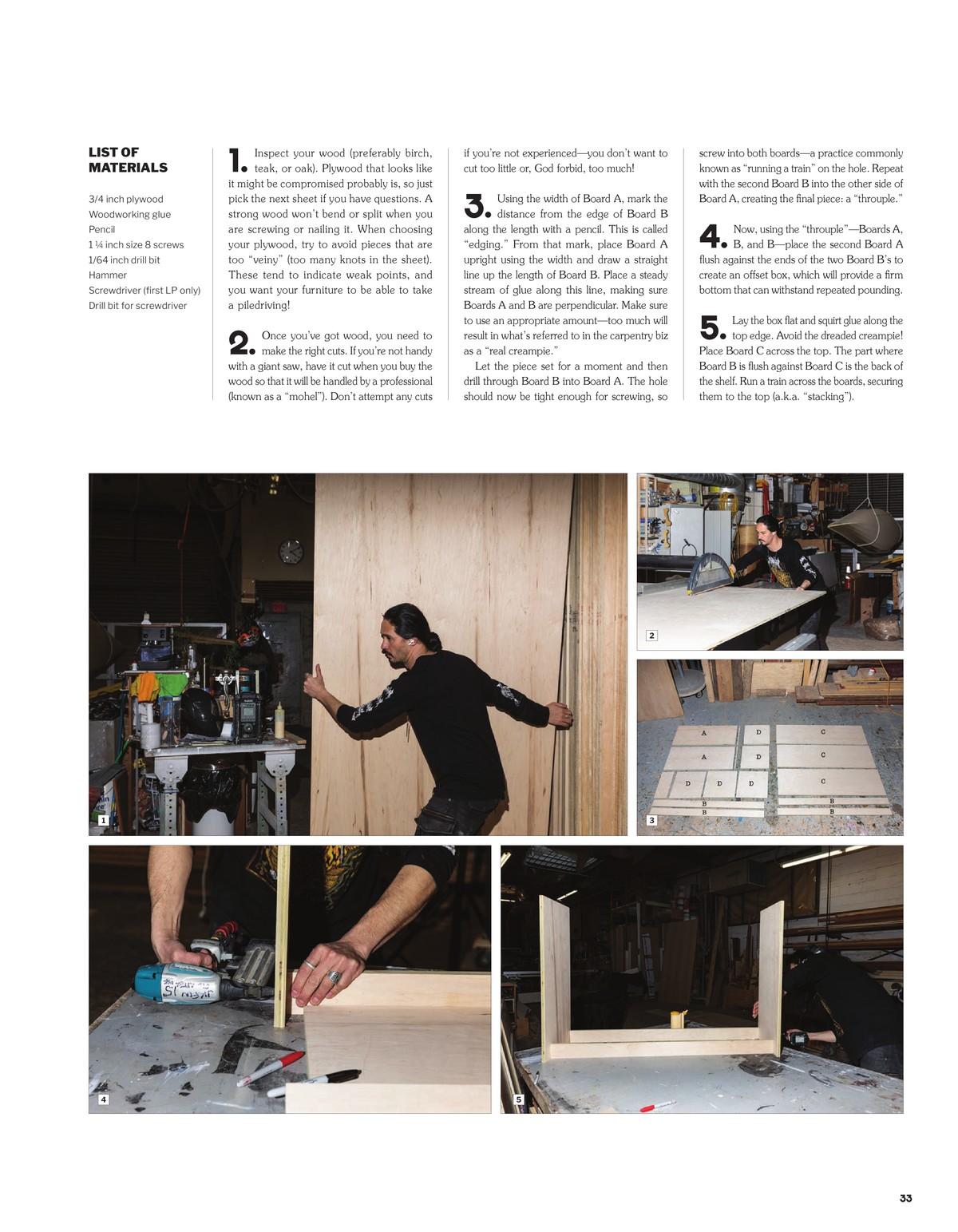HOW TO BUILD A RECORD SHELF
A master furniture fabricator whips out his hammer and nails it.


If you recognize Jessie Nelson or his work, it might be from the December 2021 issue of Architectural Digest, the lobby of an Ace Hotel, or that time you hung out at Swizz Beatz and Alicia Keys’ hideaway villa in coastal California. Not one of those? Must be from his time with Head Automatica, or as a live member of Cold Cave or Evoken. No? How about via his envious blue steel during a short stint as a Ralph Lauren model? Whatever it is, Nelson is a furniture fabricator first and foremost, building some of the most unique pieces on the planet.
We stepped to Nelson and asked him if he’d show us how to make a simple record shelf for the home, and he obliged—sending over the schematic for the shelf and discussing its assembly in fine detail. But fair warning: Jessie tends to go hard on the technical jargon.
LIST OF MATERIALS
3/4 inch plywood Woodworking glue Pencil
1 lA inch size 8 screws 1/64 inch drill bit Hammer
Screwdriver (first LP only) Drill bit for screwdriver

